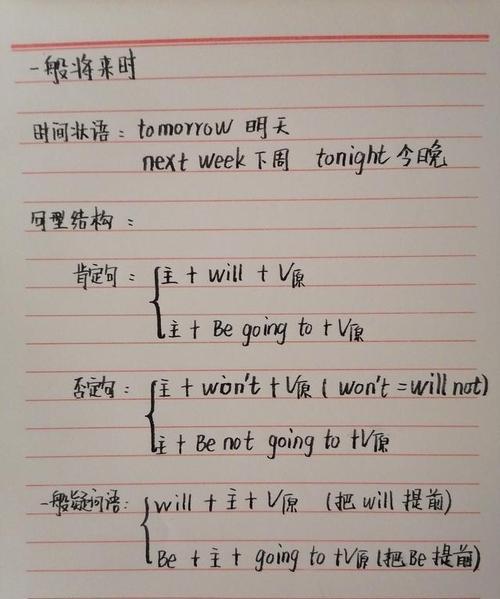一般将来时的谓语动词结构主要有三种:使用“will + 动词原形”,例如“I will go to the beach tomorrow.”;使用“be going to + 动词原形”,例如“They are going to have a party next Saturday.”;以及使用“现在进行时 + 时间状语”,例如“He is seeing a movie with his friends tonight.”。根据具体的语境,可以选择不同的结构,使英语更加流利自然。

一般将来时的谓语动词结构如下:
1. 使用“will + 动词原形”
这是最常用的一种构成一般将来时的方式。例如:
- I will go to the beach tomorrow.(我明天会去海滩。)
- She will study hard for her exam.(她会为考试努力学习。)
2. 使用“be going to + 动词原形”
这种结构也可以用来表示将来的动作或状态。例如:
- They are going to have a party next Saturday.(他们下周六要举行一个派对。)
- I am going to buy a new car next year.(我明年要买一辆新车。)
3. 使用“现在进行时 + 时间状语”
有时候,我们也可以使用现在进行时来表示未来的动作或状态。这种情况下,我们需要使用一个时间状语来指明未来的时间。例如:
- He is seeing a movie with his friends tonight.(他今晚和他的朋友们一起看电影。)
- We are having dinner at a fancy restaurant tomorrow.(我们明天在一家高档餐厅吃晚餐。)
